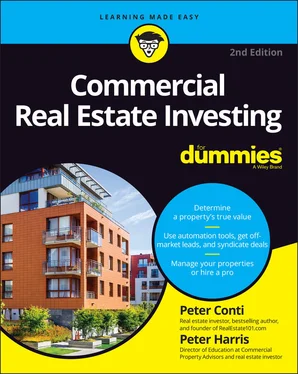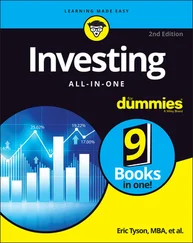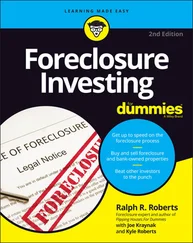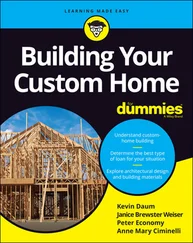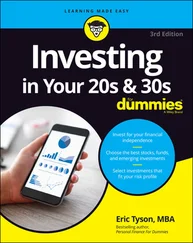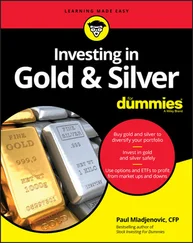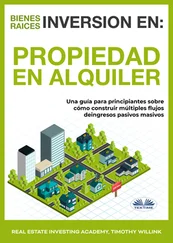Peter Harris - Commercial Real Estate Investing For Dummies
Здесь есть возможность читать онлайн «Peter Harris - Commercial Real Estate Investing For Dummies» — ознакомительный отрывок электронной книги совершенно бесплатно, а после прочтения отрывка купить полную версию. В некоторых случаях можно слушать аудио, скачать через торрент в формате fb2 и присутствует краткое содержание. Жанр: unrecognised, на английском языке. Описание произведения, (предисловие) а так же отзывы посетителей доступны на портале библиотеки ЛибКат.
- Название:Commercial Real Estate Investing For Dummies
- Автор:
- Жанр:
- Год:неизвестен
- ISBN:нет данных
- Рейтинг книги:4 / 5. Голосов: 1
-
Избранное:Добавить в избранное
- Отзывы:
-
Ваша оценка:
- 80
- 1
- 2
- 3
- 4
- 5
Commercial Real Estate Investing For Dummies: краткое содержание, описание и аннотация
Предлагаем к чтению аннотацию, описание, краткое содержание или предисловие (зависит от того, что написал сам автор книги «Commercial Real Estate Investing For Dummies»). Если вы не нашли необходимую информацию о книге — напишите в комментариях, мы постараемся отыскать её.
Commercial Real Estate Investing For Dummies
Commercial Real Estate Investing For Dummies — читать онлайн ознакомительный отрывок
Ниже представлен текст книги, разбитый по страницам. Система сохранения места последней прочитанной страницы, позволяет с удобством читать онлайн бесплатно книгу «Commercial Real Estate Investing For Dummies», без необходимости каждый раз заново искать на чём Вы остановились. Поставьте закладку, и сможете в любой момент перейти на страницу, на которой закончили чтение.
Интервал:
Закладка:
Throughout this book, we show you what “good real estate” looks like, and we tell you how to time the real estate market, what markets to stay away from, and how to know a good deal from a bad deal. Then we set you up with some powerful guiding principles of investment to help you move forward.
Categorizing investors
You can fall into one of two basic types of commercial real estate investors. The first is the cash-flow investor, and the second is the long-term hold investor. Both make excellent cases for fantastic wealth building, and both can do well in an up or down market.
Cash-flow investor
Cash-flow investors purchase properties for the purpose of putting monthly income into their pockets. And they buy commercial real estate just like you would buy a business. In other words, if you were buying a ready-made business, you would do whatever it takes to make sure that the business is a proven moneymaker, right? You would thoroughly check the financial records to prove that it could stand on its own every month. Well, cash-flow investors do the same. They take every measure to make sure they’re investing in a property that produces nice monthly cash flow.
Also, cash-flow investors don’t solely rely on appreciation as a way to get wealthy. They know that appreciation is only a bonus, a gift. If it’s present, great. If it isn’t, that’s okay, because the focus is on income. Cash-flow investors know that relying on appreciation is a form of gambling and doesn’t make good business sense. In Chapter 3, we show you how to easily evaluate and calculate cash flow for any income-producing property just like the experts do.
Another plus for cash-flow investors that’s frequently overlooked is the ability to weather the storm in a down market. In down markets sales are slow and prices are falling, and people who normally would buy homes to live in aren’t buying homes due to fear. These folks eventually become tenants for your multiunit commercial properties. This helps cash-flow investors to actually make more money in a down market.
Long-term “hold” investor
Unlike cash-flow investors, long-term “hold” investors rely on appreciation for wealth building, but they do so in a more conservative real-world fashion. They also benefit equity wise from paying down the loan amount over a number of years.
The long-term hold investor’s goals are simple: They want deals with an upside, like the ability to increase the value by improving the cash flow of the property. For example, some of the wealthiest investors we know are our mentors, who are older gentlemen who bought their pieces of commercial real estate decades ago. One of them bought land, and another bought apartments. Their philosophy was “Good real estate will always have a higher value over many years if I wait long enough.” It’s a too-simple strategy that has worked incredibly well for many patient investors. Both of these gentlemen held on to their properties in three separate down-market cycles over the years. Both have properties that are debt free, and they have made millions of dollars since.
In this book, we cover the basic foundational strategies such as “buy good real estate and wait” ( Chapter 8) along with many of the more creative, accelerated wealth building strategies just in case you’re in a hurry ( Chapter 9).
Crunching the numbers
Honestly, the only requirement needed to crunch numbers is to be able to count to ten with your fingers (or at least be able to use a calculator). What you’ll find is that any type of income-producing property can be analyzed by simply splitting up the deal into three parts:
Income
Expenses
Debt (mortgage payment)
The process for figuring out the cash flow for a 30-unit apartment complex is the same as the process for a single-family home. For instance, say you bought a three-bedroom, two-bath home and you’re renting it for $2,000 per month. As the landlord, you’re responsible for property taxes, insurance, and a landscaper. All those expenses total $600 per month. You also pay $1,000 per month for your mortgage. The tenant pays all other expenses. Here’s a quick formula for figuring out cash flow per month:
Income – expenses – debt = cash flow per month
Using the numbers from the previous single-family home example, here’s the formula in action:
$2,000 (income) – $600 (expenses) – $1,000 (debt) = $400 (cash flow)
Wasn’t too difficult, was it? Now, here’s an example for a 30-unit apartment building. You have 30 two-bedroom units renting for $1,400 per month. That totals $42,000 per month in income. Total expenses for the 30 units are $18,000 per month (which includes taxes, insurance, maintenance, and property management costs). The mortgage payment is $16,500 per month. Here’s how the formula works to find the cash flow per month:
$42,000 (income) – $18,000 (expenses) – $16,500 (debt) = $7,500 (cash flow)
 This concept applies for office buildings and shopping centers as well. Just remember that for any property you want to analyze, you need to get the income first, the expenses second, and the debt payment third. From there, you can see whether the property makes any money. In Chapter 3, we go through this concept in much more detail. In fact, after going through the real-life examples that we provide, your confidence level should be incredibly high.
This concept applies for office buildings and shopping centers as well. Just remember that for any property you want to analyze, you need to get the income first, the expenses second, and the debt payment third. From there, you can see whether the property makes any money. In Chapter 3, we go through this concept in much more detail. In fact, after going through the real-life examples that we provide, your confidence level should be incredibly high.
Exploring investing opportunities
Gee, where do we begin to discuss how many types of opportunities you have to choose from when investing in commercial real estate? It may sound cliché, but there’s something for everyone. If you like the cash-flowing dynamics of the apartment business, there are exciting times ahead for you. How about the income growth and stability of self-storage facilities? You can find out more in Chapter 17. Do you like the idea of wholesaling an apartment building ( Chapter 4) you found to another buyer for $100,000? Use creative financing strategies ( Chapter 9) to buy a 50 percent occupied office building with tenants waiting to move in. The possibilities are mind-blowing!
 When investing in a property, you have two choices:
When investing in a property, you have two choices:
You can invest in a property that’s “ready to go” with no necessary repairs, problems, or other hiccups.
You can invest in properties that have lots of problems and need to be fixed up. Commercial fixer-upper opportunities are in every city. Just like you can do with a residential property, you can fix up, flip, and profit with commercial property.
Big investment returns await you if you take the time to study the fixer-upper how-tos shown in Chapter 15. We like the commercial fixer-uppers because after the rehab is complete, most times you can hold for cash flow, hold for long-term wealth generation, or flip for instant profits that you once thought would take years and years of hard work to earn.
Financing a property
Are there differences between obtaining a loan for a single-family home and a neighborhood shopping center? The answer is yes, of course, but the differences may surprise you. Pretty much all you need to get a home loan is a good credit score and a down payment, and then you have to make enough money to pay the mortgage. When you get a loan for a commercial property, getting a loan is based on the following three main qualifications:
Читать дальшеИнтервал:
Закладка:
Похожие книги на «Commercial Real Estate Investing For Dummies»
Представляем Вашему вниманию похожие книги на «Commercial Real Estate Investing For Dummies» списком для выбора. Мы отобрали схожую по названию и смыслу литературу в надежде предоставить читателям больше вариантов отыскать новые, интересные, ещё непрочитанные произведения.
Обсуждение, отзывы о книге «Commercial Real Estate Investing For Dummies» и просто собственные мнения читателей. Оставьте ваши комментарии, напишите, что Вы думаете о произведении, его смысле или главных героях. Укажите что конкретно понравилось, а что нет, и почему Вы так считаете.
